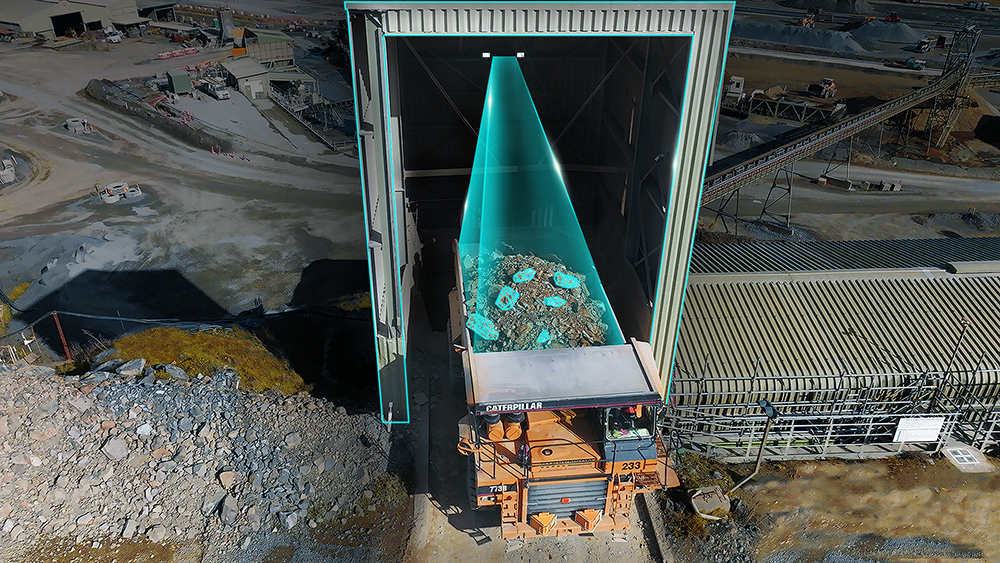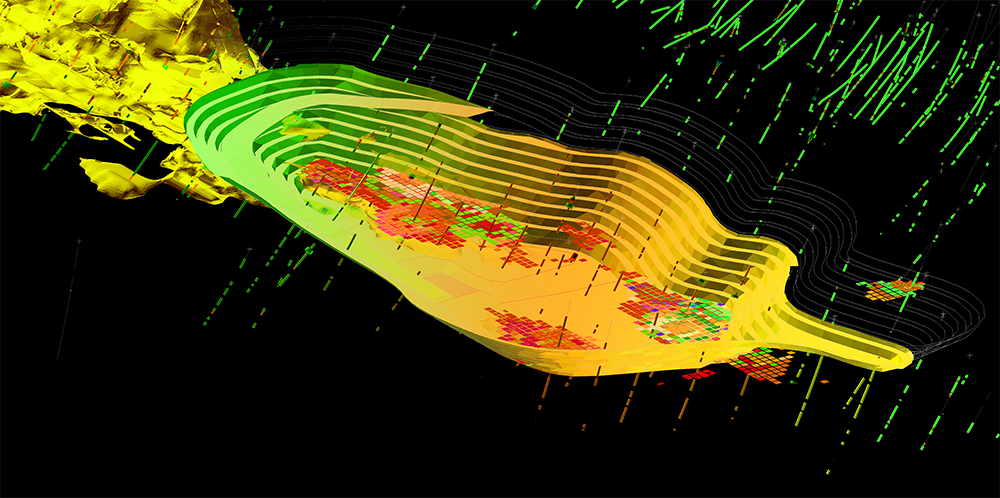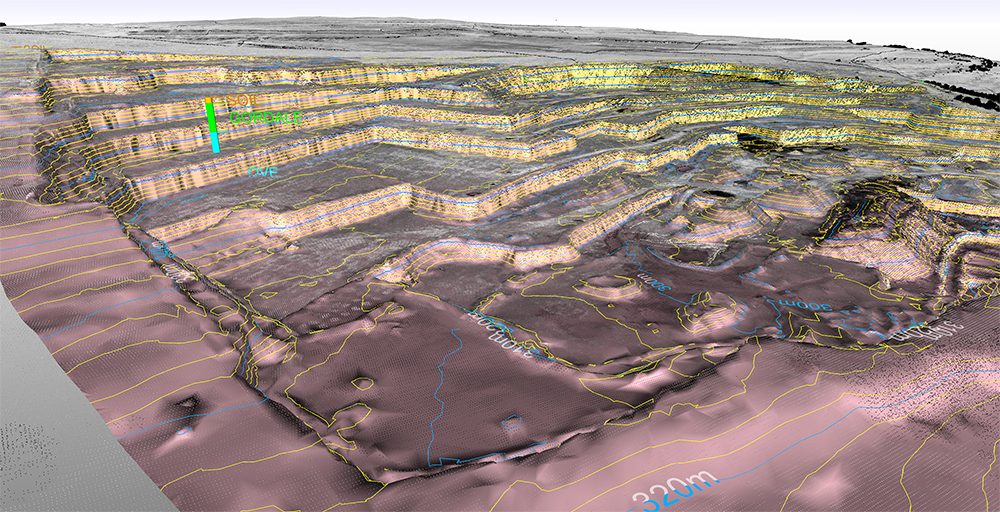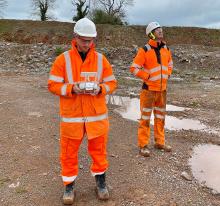
As one of the world's leading mining, quarrying and infrastructure solutions companies, Orica’s digital strategy is maturing beyond the range of technologies it offers today, aiming to deliver a suite of digitally integrated workflow tools to enable the corporate vision of sustainably mobilising the Earth's resources.
Traditional digital solutions including software and IoT devices are typically focused on delivering data and insights specific to a discrete product. Through the digital integration of workflows, customers can now gain a deep understanding of how geology within the ore body intelligence space informs the optimisation of energy required for blasting in real time, and the subsequent benefits on downstream processes.
One example of this is Orica’s FRAGTrack suite of automated fragmentation and analysis technologies that has proven to deliver operational continuity for quarrying and mining operations, enabling downstream process efficiency by providing insights to optimise fragmentation.
The award-winning fragmentation monitoring solution leverages deep neural network artificial intelligence, along with industry-proven hybrid 2D and 3D particle-size distribution (PSD) processing methods. The system now includes a new variant, FRAGTrack Crusher, specifically designed for the quarry and construction market, providing automated, near real-time fragmentation monitoring at the crusher dump pocket.

Raj Mathiravedu, vice president for Digital Solutions at Orica, said: “Delivering unmatched measurement accuracy of material on trucks during the tipping operations, FRAGTrack Crusher is our latest addition that autonomously delivers constant and accurate performance tracking of particle-size distribution to drive continuous end-to-end improvements for quarrying and mining operations. Our technology roadmap is to leapfrog from measurement as a tool to measurement as an outcome, and it is great to see the value that this is unlocking for our customers.”
Stevenson Aggregates, a long-established concrete and aggregates provider recently embarked on a project to improve crusher throughput and reduce carbon footprint at Drury Quarry in New Zealand. Among the challenges faced were irregularities of scalping yield and inconsistent crusher throughput. Manual interventions and in-pit sampling for improvements had been time-consuming and unsustainable.
In response, Orica installed FRAGTrack Crusher, enabled with machine vision at the primary crusher feed, providing PSD analysis during tipping without interfering with the haulage operation. Smart trigger settings captured true samples and insights are fed to the FRAGTrack portal that enabled a direct feedback loop to managers and engineers for assessing blast fragmentation performance, as well as production rates, blockages, and the amount of primary crushing versus secondary crushing.
Daniel Topp, performance manager at Stevenson Aggregates, said: “FRAGTrack is allowing us to obtain information that we've never typically had. What we're getting out of it so far is huge information to understand our rock and resource better. This is actually data that we can feedback and analyse and that's pretty revolutionary.”
Since the installation of FRAGTrack Crusher in May 2022, Drury Quarry has been equipped with more than 10,000 fragmentation images and PSD data, generating unbiased data that matches blast PSD to crusher performance metrics through time-stamped samples. A critical insight revealed that a large percentage of blasted rock bypassed the primary crusher and went straight to the secondary feed. This led to the calibration of the fragmentation prediction model to optimise blast design and the opportunity for pattern expansion to increase coarse rock fragments.
The application of FRAGTrack has saved Drury Quarry over 800 hours of manual processing, of which a fraction of the time is now given to data analysis and correlation, and continual optimisation of its operations. More importantly, FRAGTrack has allowed Drury to develop an accurate and unbiased PSD baseline for the optimum range of sizes to maximise crusher performance and reduce scalp yield.
Recognising the value of the partnership, Stevenson Aggregates’ general manager, Kurt Hine, said: “Having a partner like Orica is great for us. We love our supply partners coming to us so that we can continue to innovate, improving our processes and deliver a quality product to our customers in a more sustainable way."
Today, Drury Quarry continues to leverage the FRAGTrack Crusher to reduce overall cost per tonne of aggregate, provide critical data for specific drill and blast optimisation and reduce overall carbon footprint as the demand for aggregate production in the region rises.
Orica’s leading blasting technologies undergo continuous improvements – among them is the uni tronic electronic blasting system designed for quarrying and construction. The current variant and its predecessor have long been the leading blasting systems in the category since 2004. Widely adopted globally, the current uni tronic 600 is hailed for its inherent safety features, reliability and cost-effectiveness in addition to its remote firing capability. Trials are underway for the next generation uni tronic. Details are yet to be revealed but Aggregates Business understands that enhancements are being made to the system to deliver greater precision timing, increased firing capacity, more flexible timing delays and a new user interface to speed up operations.
Joel Guenther, global senior manager for marketing (EBS), said: “As uni tronic continues to see increased adoption, we continue to look for opportunities to improve its features and usability to better support our customers. The upcoming release of our next-generation electronic blasting system will be easier to learn and use, with an improved user interface to enable faster field implementation and troubleshooting.”

The upgraded version looks set to enter the market globally in the first half of 2023.
Experienced engineer Scott Britton, of leading global quarrying and mining technology provider Maptek, has observed a growing appetite to embrace new drill and blast technology solutions in the quarrying sector.
Quarry operators are starting to consider more advanced software solutions as operations face ever-higher demands to perform efficiently and comply with more stringent environmental and permitting constraints. Historically, the comparatively small size of quarries, and the perception of a lengthy return on investment, has contributed to a lack of focus on best-available technology when it comes to detailed analysis, modelling and design for drill & blast activities.
Production improvements have been introduced through more efficient fleet vehicles, automated systems and better utilisation of hardware, but when it comes to specialised software for design and modelling there has been a lack of real technical innovation.
Many quarries use CAD software, which is often lacking in sophistication or current techniques, meaning operations miss out on the opportunity to access ongoing improvement in their drill and blast practice.
As operations grapple with industry-wide skills shortages and large companies look to acquire quarries, there is growing enthusiasm to explore better design, execution and reconciliation methods.
Maptek’s sales manager: Europe, MENA & West Africa, Britton says one of the biggest drill and blast challenges for the quarrying sector is the lack of technical resources available to help make efficiency gains and push for change.
For various reasons, profit margins on the majority of projects are so small that, in addition to the expertise shortage, there is limited revenue for investing in the latest technology.
As most quarry operations are fairly small in comparison to bulk mining projects, it can be challenging to incorporate changes that typically deliver relatively small improvements, as the payback period can be much longer.
The quarrying sector has also struggled to retain skilled technical staff, with increased competition coming from construction and civil engineering, accelerating the need to embrace automation.
Some operators recognise that this change is coming and are starting to make appropriate changes, but due to the lack of investment and resources, companies that fail to streamline their operations are likely to struggle.
In addition to issues relating to technical resources, productivity and efficiencies, more stringent legislation and permitting is now required to exploit new resources. This has increasingly resulted in higher project startup costs and further reliance on specialist consultants to support new planning applications.
"Ultimately it means that companies are at risk of being uncompetitive if they fail to adapt," Britton says.
"They know this, and demand for Maptek solutions and technical support is on the rise within the quarrying sector. We are beginning to see a higher level of interest and engagement at technical events with more companies approaching us for help."
While Maptek has more customers in the mining sector, its solutions can be found in a wide range of quarry operations across Europe. One long-standing customer has used Maptek Vulcan geological modelling and mine-planning tools routinely for their mainland Europe projects over the past 20 years and recently started to implement a similar approach for their operations in North America.
In a large operation, different (survey, modelling, design) tasks are performed by dedicated teams. In quarry operations, a smaller technical team requires individuals to carry out multiple tasks to keep projects moving.

These range from the extrapolation of existing resources, reconciliation of the current ‘mined’ topography and stockpiles against the remaining reserves or preparing new excavation designs and production schedules to satisfy key strategic objectives.
From a drill and blast perspective, it is common for quarries to apply standardised burden/spacing patterns and hole-charge plans. This approach does not optimise rock fragmentation or help to best mitigate environmental effects as these key parameters often differ from blast to blast.
CAD-based software in current use by the quarrying industry is often not up to the task. Even minor modification to excavation or blast designs requires significant time and effort, meaning it simply does not get done, or only gets done once. There is seldom time available to consider alternative scenarios, which is how mine planners and drill and blast teams can pre-empt issues before they occur.
This is where Maptek comes in. Vulcan QuarryModeller, Vulcan Drilling Designer and BlastLogic products have been configured to efficiently perform routine tasks. These products employ cutting-edge visualisation, geological domaining and modelling capabilities, as well as easy-to-use design and planning tools in a single software environment.
Vulcan QuarryModeller is tailored for modelling and analysing deposit geology and designing quarry operations. Different scenarios can be tested to maximise output, and production reports can be generated to guide daily operations. Adding the Vulcan Drill and Blast Design module brings in tools for previewing a drill and blast pattern before it is set, ensuring potential layout issues are solved early, saving time on the ground.
Benefits of the advanced approach allow quarry operators to:
- Test blast patterns quickly and efficiently to identify the optimal design
- Reduce consumable costs and increase production by maximising equipment efficiency
- Save time and reduce errors with automated editing of multiple holes
- Ensure accurate blast designs with up-to-date information
Complementary solutions include the Maptek open-pit scheduler Evolution, GeoSpatial Manager for managing survey surfaces and PointModeller for modelling point cloud data. Working with the Maptek suite of tools allows the majority of work for a quarry project to be handled in one system, with single-vendor technical support and services.
As quarry staff need to be multi-skilled, Maptek understands software solutions need to be intuitive.
“Multi-tasking may see an individual running some geological modelling, creating a blast pattern and changing the excavation design,” Britton says.
“Tools that interact with the pit design and the geology as well as the spatial technical data, provide a seamless data flow.
“Software that is quick and easy to learn and that does all of those tasks becomes an important asset for quarry operators and managers.”
The efficiency gain leaves time to run alternative scenarios, adjust to changes in rock type, consider infrastructure and ESG concerns and experiment with different designs.
“If users are not able to explore scenarios virtually on the desktop, they’re not getting the opportunity or the data to drive for these efficiencies.
“Holes are easily manipulated in Vulcan, allowing users to quickly make adjustments. This is a huge benefit, because with inefficient, older packages it's almost impossible.
“Changing drill-pattern design or hole loading or charge plan for a blast could take half a day with CAD packages, whereas Vulcan can do it in a matter of minutes.
“The tools all tie into each other and the data flows, so you make the right decisions.”
The enterprise nature of drill and blast management and reconciliation package BlastLogic may be beyond the scope of individual quarries. However, it is ideal for large organisations operating multiple satellite quarries, which Britton notes is a growing trend in the UK and beyond.
“Each quarry may only blast a small number of holes weekly or monthly, with the same blast team moving from site to site to carry out the work. BlastLogic supports the drill and blast design and inventory control in a centralised, audited system so there's definite benefits,” Britton says.
Maptek understands the issues that quarry operations and industrial minerals companies face - the global mining sector faces a similar dilemma - and has applied insights garnered from its 40-year foundation in the mining industry to deliver solutions that support safe, productive extraction.
Britton, a chartered engineer with a background of more than 25 years in mining and who obtained EPC shotfiring & blast design certification in the mid-1990s and a DAPS Quarry Manager’s Qualification more than 20 years ago, says experience and technical expertise set Maptek apart.

“We employ skilled technical teams who understand these types of problems and can draw on our global pool of experts,” he says.
“Our technical team includes people who have worked at mining operations, and I do think it's an important differentiator that means Maptek is better placed to understand customer problems and identify how we can help.”
Post-COVID, as in-person events such as trade shows return, he has noticed a growing appetite for change.
“When we attend these events, we're getting an uptick in activity around what Maptek solutions offer.
“There’s definitely a positive charge in the industry and a willingness to look at all the solutions available.”
A company philosophy which includes walking in the shoes of customers has helped Maptek reposition its offerings to quarries, led by dedicated packages at more attractive prices, flexible licensing and web-based applications.
The Maptek Account licensing system is designed to facilitate software uptake and usage between users and teams. Scalable configurations can facilitate short-term campaign access to advanced, industry-leading optimisation features.
The technical support and services staff come from diverse industry backgrounds and are always eager to get involved with unique, challenging projects and find innovative solutions.
“Maptek’s varied customer base ranges from some of the largest global mining companies to individual operations with a handful of staff. This means that our local service team can draw on a global network of expertise to ensure our customers get the support they need.”
As automation becomes more prevalent, operations need to become better equipped to handle the demands of the systems collecting and delivering the data stream.
The capability to quickly update designs and planned sequences in a digital workflow that takes into account changing geological conditions is critical for allowing the latest data to flow through from the resource model to production, ensuring that ore body knowledge informs all activities.
Interoperability and integration of tools in the modelling and design process enable block models and scheduling plans to be updated as new data becomes available.
Maptek says it is the perfect technology partner to help quarries adapt and thrive through this evolution of mining and quarrying practices.








